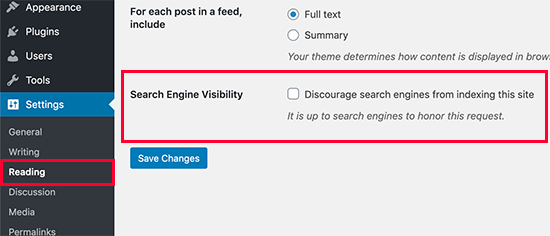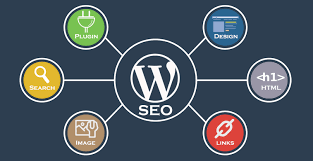SEO Stands for Search Engine optimization, which is a set of practices designed to enhance the look & positioning of internet pages in organic search results. Because organicsearch is the most outstanding way for humans to find out and get admission to online.
SEO may additionally goal special sorts of search, such as photo search, nearby search, video search, and information search engines. Employing a sound website positioning approach will help you role your internet site desirable to be determined at the most essential factors in the shopping for technique or when human wants your site.
WHY IS SEO IMPORTANT?
It is vital for your business internet site to be listed on search engines?
On Google alone, there are over 694000 searches performed each second. Every second that your internet site is now not listed on Google, you are doubtlessly lacking out on hundreds, if no longer lots of possibilities for someone to go to your website, examine your content, and probably purchase your product or service. Practicing web optimization basics as nicely as greater superior techniques after those, can significantly enhance your website’s capacity to rank in the search engines and get determined through practicable customers.
Remember the advanced the website is listed, the further people will see it:
- Good SEO involves numerous different conditioning, similar as creating high-quality useful content and optimizing it for hunt business eventually, creating high quality, useful content and optimizing it for hunt machines and for druggies.
- Including applicable links from high quality spots measuring the results.
Let’s discuss about differences and similarities between Paid & Organic search:
DIFFERENCES:
From the outset, it`s vital which you apprehend the variations among the natural, herbal seek synonymous with search engine marketing and paid seek.

There are 5 key variations:
- Position:
The first distinction is that paid seek effects seem on the pinnacle of seek engine effects pages, and natural effects seem underneath them.
- Time:
Another key distinction among paid and natural seek is time. With paid seek, you get close to immediate effects, every so often in minutes; whereas, with natural seek, effects take extra time – regularly weeks, months, or even years. So you need to play the medium to lengthy-time period recreation with natural seek.
- Payment:
When it involves paying, well, because the call suggests, with paid seek visitors is paid. You pay-per-click on (PPC) on a cost-per-click on (CPC) basis. What which means is, you pay a charge each time a person clicks for your advert. So rather than counting on natural visitors for your website, you purchase visitors to your web page via way of means of paying Google to expose your advert while your traveller does a look for your key-word. For natural seek, visitors is free, even though it does require funding of each assets and time.
- ROI:
In phrases of the go back on funding or ROI, it`s truly a good deal simpler to degree with paid seek. That’s in part due to the fact Google offers extra key-word facts that you could seize in Google Analytics. However, with paid seek, ROI can stagnate or decline over time. With natural seek, ROI is a touch bit tougher to degree, however it regularly improves over time. Over the lengthy time period, natural seek can provide a excellent go back on funding.
- Share of visitors:
When it involves the percentage of visitors, more or less 20% to 30% of searchers click onpaid effects, and 70% to 80% of searchers click onsearch engine marketing effects.
SIMILARITIES:
- Keyword studies:
You use a seek engine for each paid and natural seek, and each require a person to go into a key-word. So you want to do key-word studies for natural seek and paid seek.
- Landing pages:
Both sorts of seek require you to create touchdown pages. For SEO, the touchdown web page wishes to be linked for your website. For paid seek, it could be the precise equal touchdown web page you operate for natural, or it could be a very separate stand-on my own web page that sits off your website.
- Traffic:
Generating site visitors is a first-rate aim of each paid and natural seek. Most importantly, each paid and natural seek site visitors consists of person intent. That is, a person is looking Google a query or looking for information – they’re in a lively mind-set and as end result they’re much more likely to do so when they discover this information.
HOW DOES SEO WORKS?
Search engines are utilized by human beings once they have a question and are looking at the net for the answer. Search engine algorithms are laptop programmes that search for clues to offer searchers the precise consequences they’re searching for. Search engines rely upon algorithms to locate net pages and determine which of them to rank for any given keyword. There are 3 steps to how search engines like google like google and yahoo work: crawling, that is the invention stage; indexing, that is the submitting stage; and ranking, that is the retrieval stage.
Stage 1: Crawling
The initial step is creeping. Web indexes convey web crawlers to track down new pages and record data about them we now and then call these web crawlers ‘insects’ or ‘robots’. Their motivation is to find new website pages that exist, and furthermore to occasionally check the substance on pages they’ve recently visited to see whether they’ve changed or been refreshed.
Web search tools slither website pages by following connections they’ve as of now found. So assuming you have a blog entry and it’s connected from your landing page, when a web index creeps your landing page, it will then, at that point, search for one more connect to follow and may follow the connection to your new blog entry.
Stage 2: Indexing
The subsequent advance is ordering. Ordering is the point at which a web crawler concludes whether or not it will utilize the substance that it has crept. On the off chance that a slithered page is considered commendable by an internet searcher, it will be added to its list. This record is utilized at the last positioning stage. At the point when a site page or piece of content is recorded, it is documented and put away in a data set where it can later be recovered. Most website pages that offer remarkable and significant substance are put into the list. A page probably won’t be set in the record if:
• Its substance is viewed as copy
• Its substance is viewed as low worth or nasty
• It couldn’t be crept
• The page or space needed inbound connections
Stage 3: Ranking
The third step is actually the main advance, and that is positioning. Positioning can occur later the slithering and ordering steps are finished. So when a web crawler has crept and filed your webpage, your website can be positioned.
There are in excess of 200 positioning signs that web indexes use to sort and rank substance, and they all fit under the three mainstays of SEO: specialized enhancement, on-page advancement, and off-page improvement. A few instances of signs that web crawlers use to rank site pages are:
•Catchphrase presence in title tag – Whether the watchword or an equivalent word was referenced on the page and inside the title tag
•Stacking velocity of page – Whether the page stacks rapidly and is versatile
•Site notoriety – Whether the page and site is viewed as legitimate for the point being looked for .







